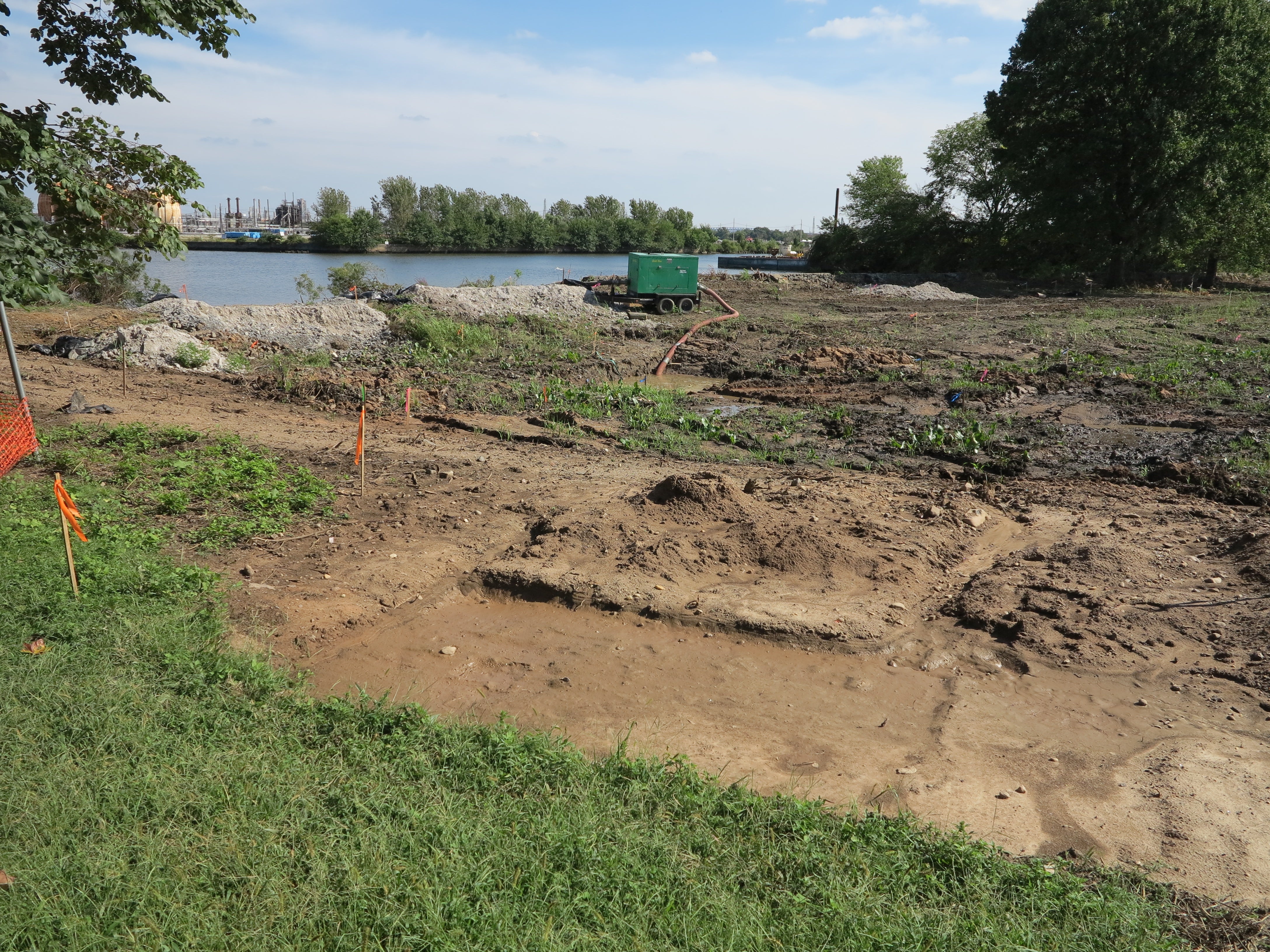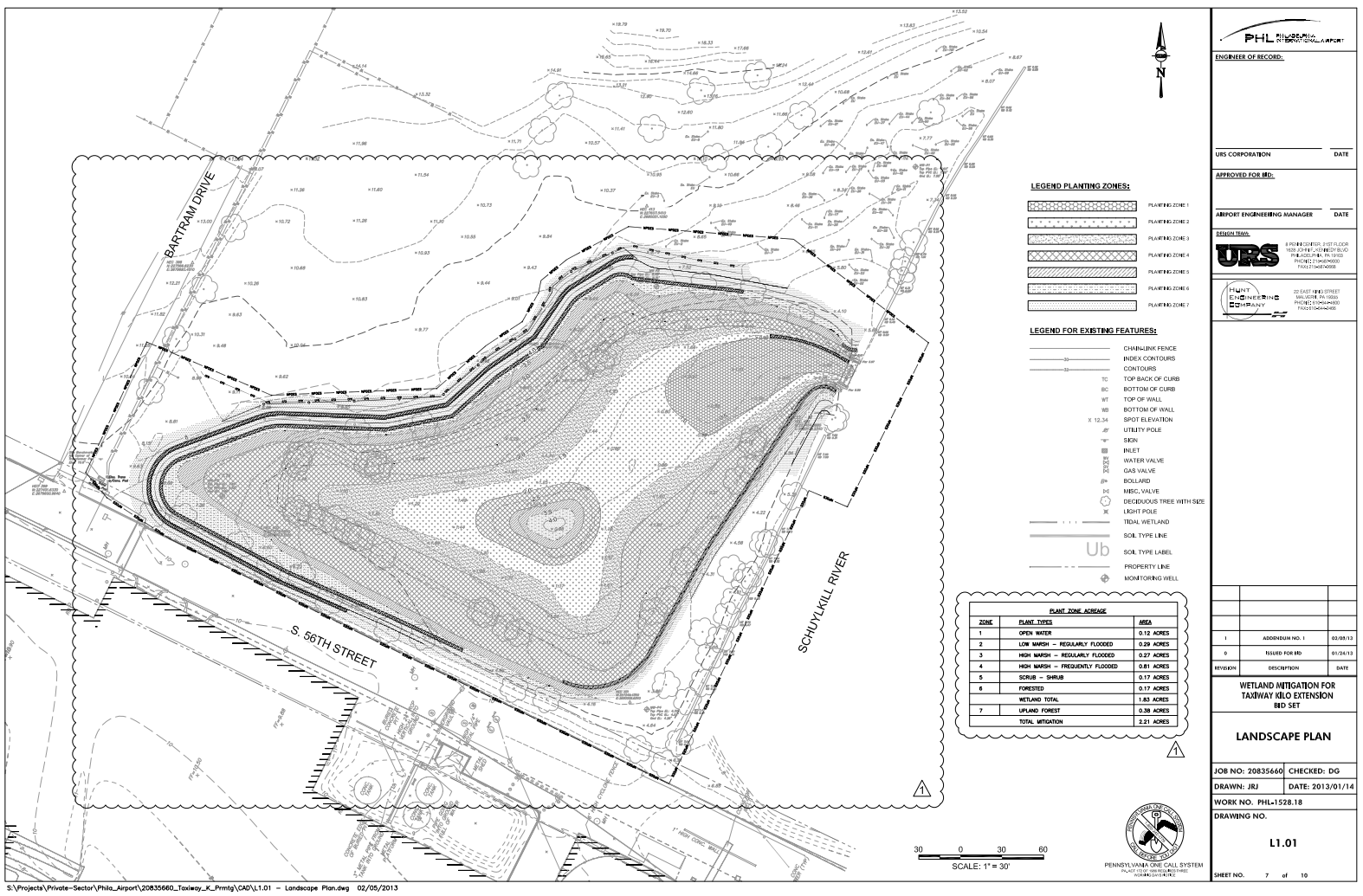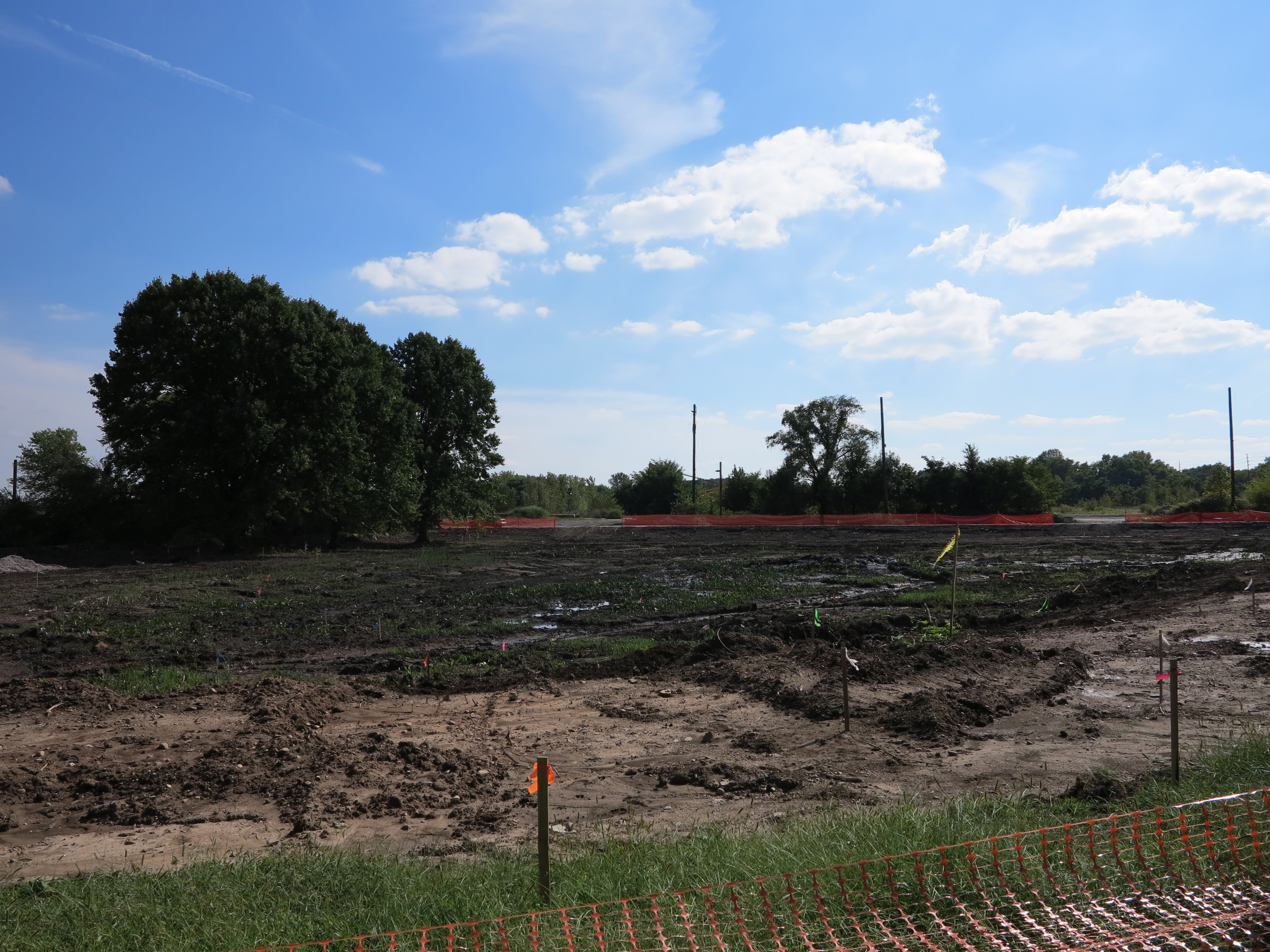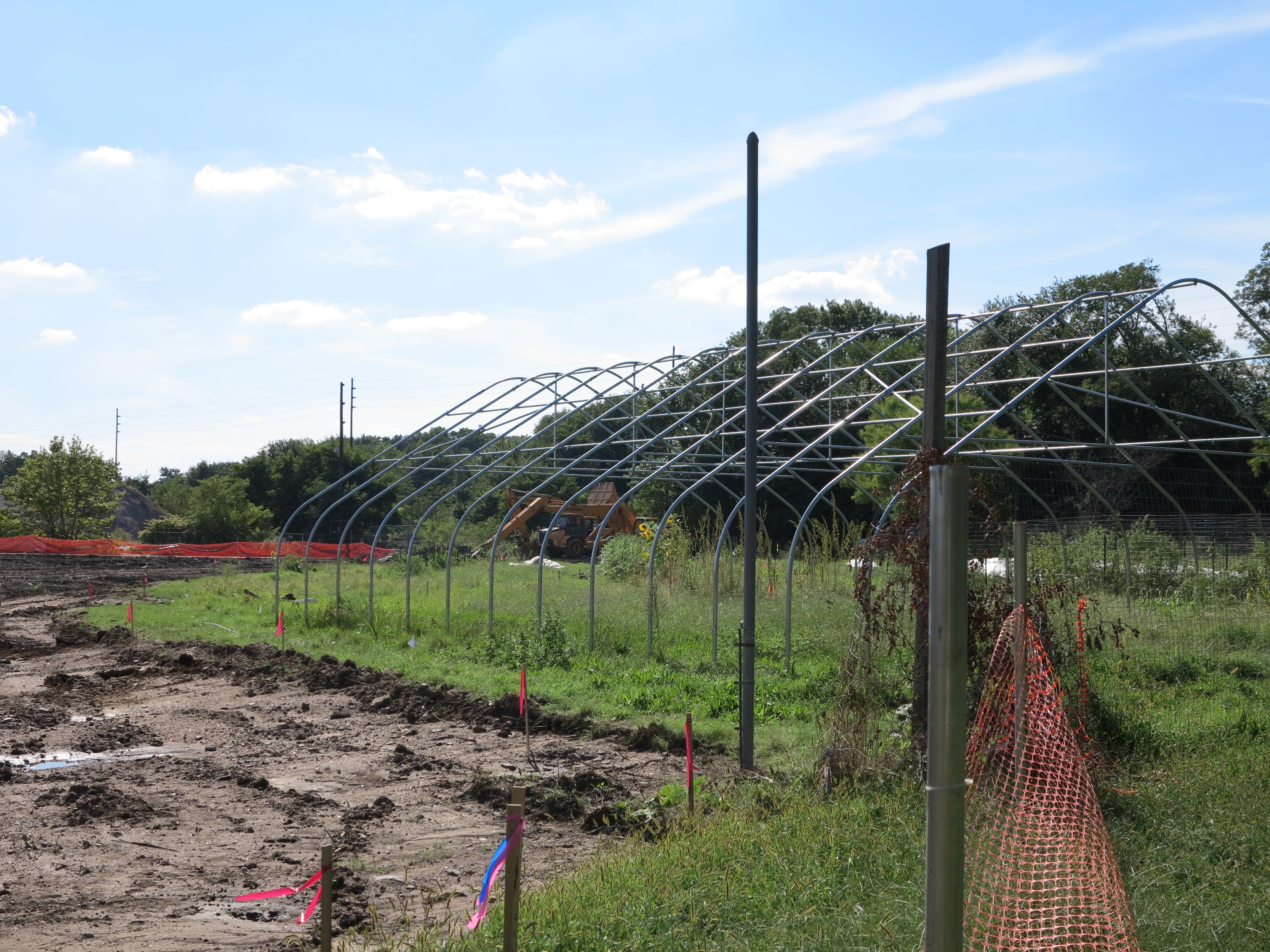Bartram’s Garden wetlands restoration, expansion underway to offset airport project

Bartram’s Garden is still firmly in its growing season. Colorful blossoms – including the famed Franklinia trees with their delicate citrusy scent – grace the formal gardens and woodland walks, and the community farm and orchard are overflowing with fruits and veggies. Even the man-made wetlands is growing.
Stand on the hill leading down to the community farm at Bartram’s Garden and you can see clear through to 56th Street. But that’s only temporary: The wetlands next to Bartram’s Farm has been drained, invasive species and thick weeds removed, and the footprint of the wetlands area has been enlarged.
The 1.5 acre wetland was originally built in 1997 as environmental remediation after Sun Oil was fined by the Environmental Protection Agency for polluting the Schuylkill River and Southwest Philadelphia’s air quality. South and Southwest Philadelphians sued to get some of that massive settlement spent locally on environmental improvements. Over the next few months the tidal wetlands at Bartram’s Garden will change again due to an environmental mitigation agreement, this time tied to the runway enlargement project at the Philadelphia International Airport. The new wetlands will be a bit bigger, at about 2.2 acres in total.
The first time around, the wetlands “didn’t have long term monitoring or money for woody plants” to anchor the wetland, said Bartram’s Garden curator Joel Fry. As a result, he said, the weeds and invasive species like phragmites took over quickly. Also, the earlier version of the wetlands was never dedicated as permanent wetland, but this time it will be. The same mistakes won’t be made twice.
URS designed the new wetlands with seven slender planting zones, a gradient ranging from open water to marsh to shrub to forest, designed for wildlife habitat.
The outermost planting zone will be an edible wetlands border that is essentially a companion to the farm. Here pawpaw, beach plums, American hazelnut, persimmon, and elderberry will be among the new edible plantings. Toward the center of the wetlands the plants become progressively more water tolerant, and will include species of reeds, willow, water lily, and maybe even wild rice (which Fry said was once very common in the marshes of South Philadelphia).
The rebuilt wetlands will be more fully tidal. This could help encourage the wetlands as a spawning ground for larger fish like bass. It’s even possible the engineers could leave a hump-like form in the middle of the wetlands that could act as an island for waterfowl like herons or egrets to enjoy.
The little footbridge that allowed visitors to peek over the river or into the wetlands has been removed from the river’s edge and will not be reinstalled. So sadly it may not be so easy for visitors to Bartram’s Garden to see the wetlands zone in action.

Before the wetlands enlargement and improvement project could begin, a detailed survey of the site’s important archaeological resources – some as old as 4000 years ago – had to be conducted to make sure that the excavation would not disturb important subterranean deposits.
Fry describes the site as “one of the richest Native American sites in the county,” largely because the property remained relatively undisturbed as much of Philadelphia industrialized and was built up.
During digs in early 2012, archaeologists found “vast deposits” from Native American settlements from the Archaic and Woodland Periods – including a variety of arrowheads – as well as relics the New Sweden colonial era and beyond – finding pieces of pottery, glass drawer pulls and beads.
WHYY is your source for fact-based, in-depth journalism and information. As a nonprofit organization, we rely on financial support from readers like you. Please give today.









